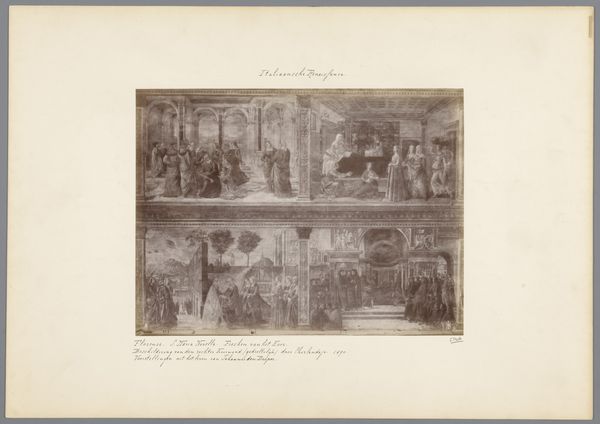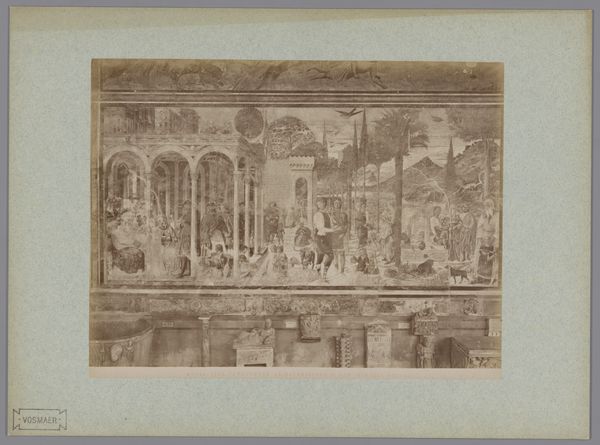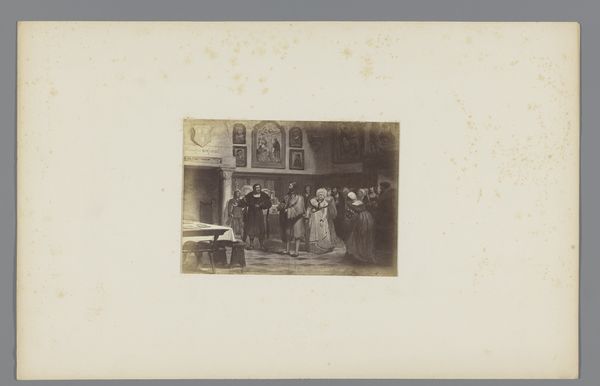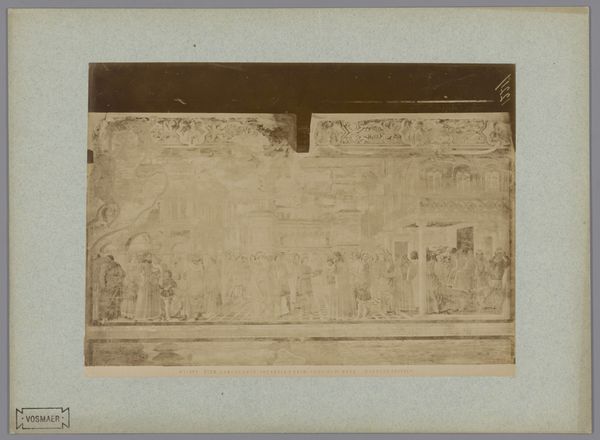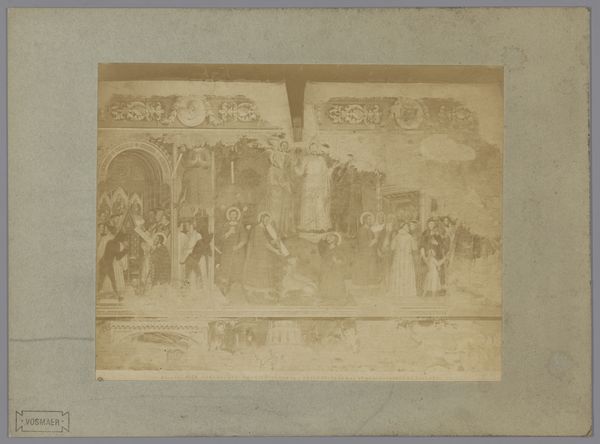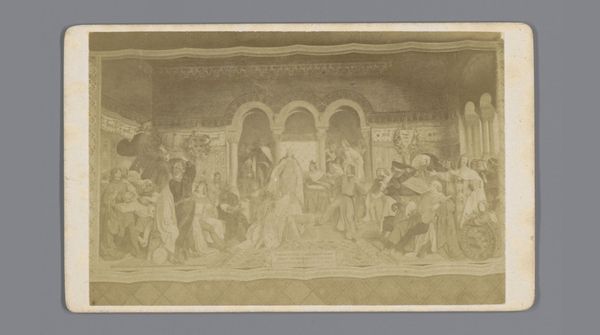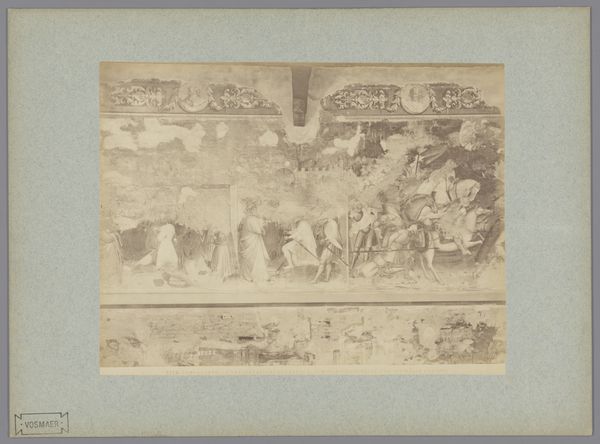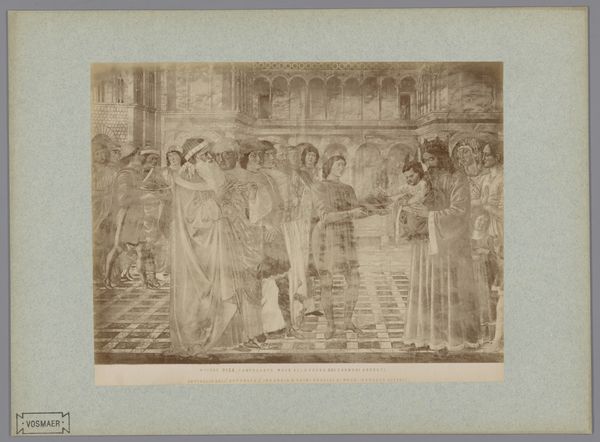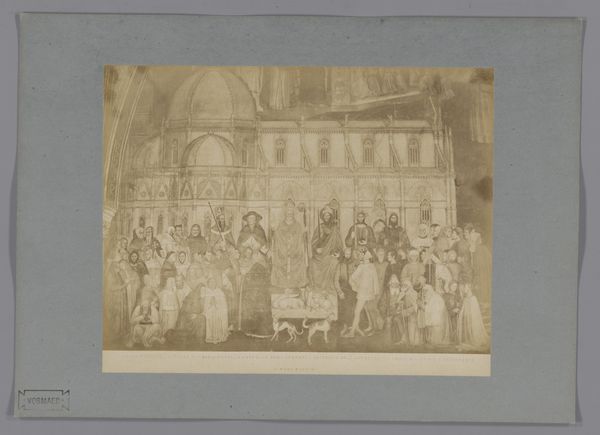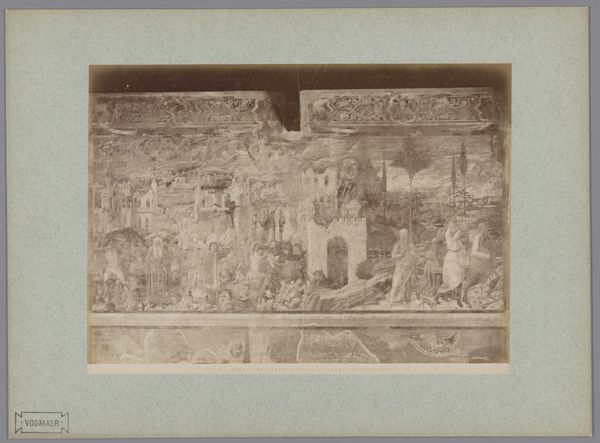
Fotoreproductie van het fresco De bekering van Renier van Pisa naar Andrea da Firenze in het Camposanto te Pisa, Italië 1857 - 1900
0:00
0:00
print, fresco, photography, gelatin-silver-print
#
aged paper
#
toned paper
#
paper non-digital material
#
narrative-art
#
muted colour palette
# print
#
landscape
#
figuration
#
fresco
#
photography
#
gelatin-silver-print
#
history-painting
#
italian-renaissance
Dimensions: height 190 mm, width 244 mm, height 260 mm, width 354 mm
Copyright: Rijks Museum: Open Domain
Curator: We're looking at a photograph of a fresco today. The photograph, a gelatin-silver print, was taken sometime between 1857 and 1900. It is attributed to Fratelli Alinari, and it depicts Andrea da Firenze's fresco "The Conversion of Renier of Pisa," originally found in the Camposanto in Pisa, Italy. Editor: Immediately, the print’s monochromatic palette and the linear precision of the composition evoke a sense of reverence and formality. The subdued tones lend it a feeling of temporal distance, drawing the eye towards the narrative unfolding within the frame. Curator: It’s intriguing how the photograph itself acts as a historical document, mediating the viewing experience of the fresco. We're not seeing the original work, but rather a reproduction filtered through a 19th-century lens, one which participates in its dissemination and preservation. Editor: The structure is really quite interesting. Note how the composition utilizes a series of horizontal and vertical lines, segmenting the narrative into discrete episodes. This fracturing enhances the symbolic weight of each conversion scene. The use of architectural framing also guides the viewer’s eye sequentially across the events depicted. Curator: And that narrative itself focuses on Renier’s transition. He renounces his wealth, symbolized in part by his garments and worldly associations, in favor of a religious life, culminating in the scene of him receiving a blessing. It speaks to the medieval preoccupation with piety. Editor: True, this representation of renunciation echoes across cultural interpretations and reminds us of other devotional scenes, even as its formal arrangement prompts us to examine the aesthetic considerations. Curator: This photograph helps us to explore layers of historical interpretation – the original 14th-century fresco viewed through the lens of 19th-century photographic practices. It gives an opportunity to think about artistic legacy. Editor: Absolutely, and considering Alinari’s meticulous approach to capturing cultural artifacts, it underscores photography’s pivotal role in democratizing art viewing. Curator: Indeed, it brings distant artworks to a wider audience, irrespective of geographical location or social status. A captivating intersection of art and technology. Editor: Yes, something to certainly keep in mind.
Comments
No comments
Be the first to comment and join the conversation on the ultimate creative platform.

